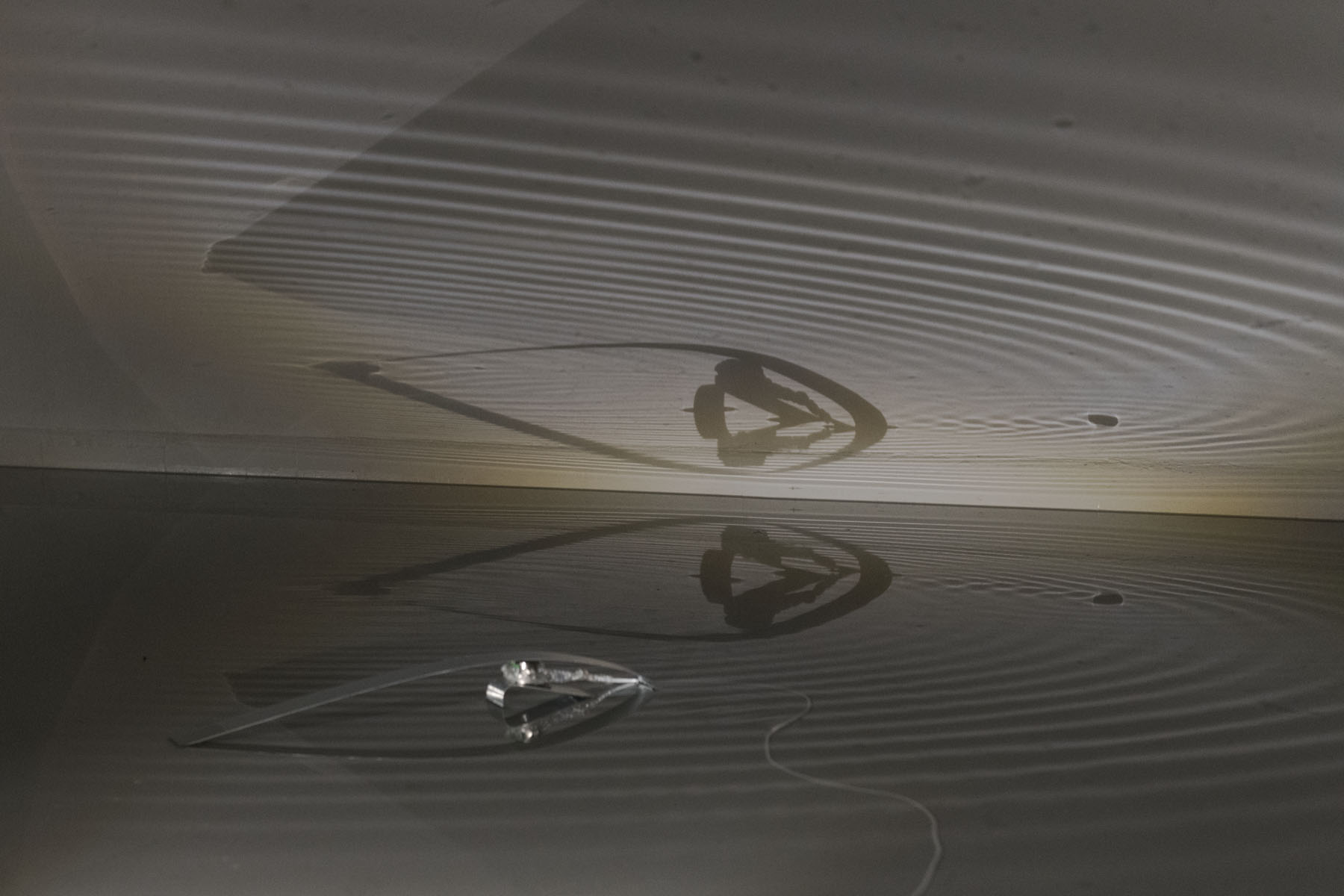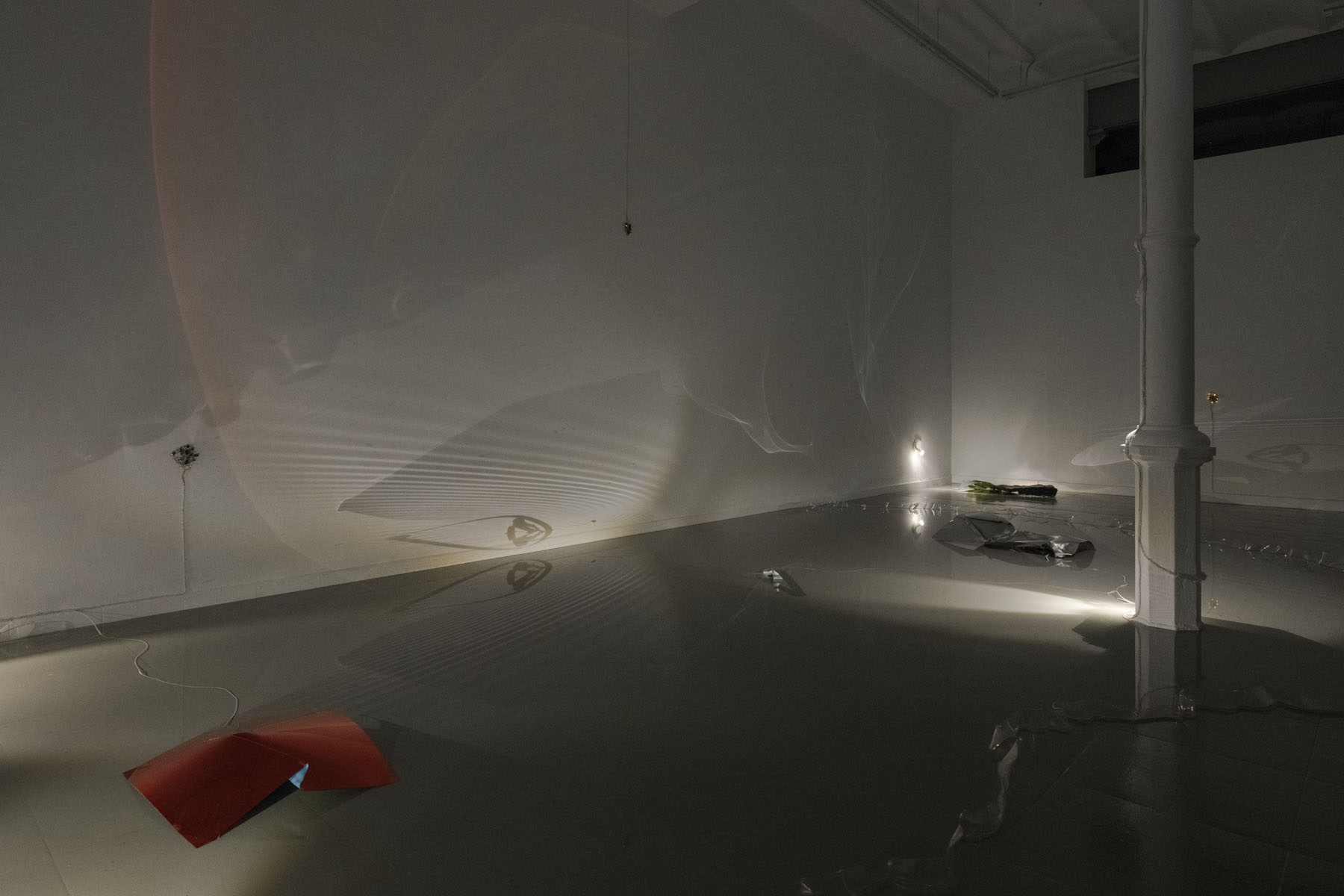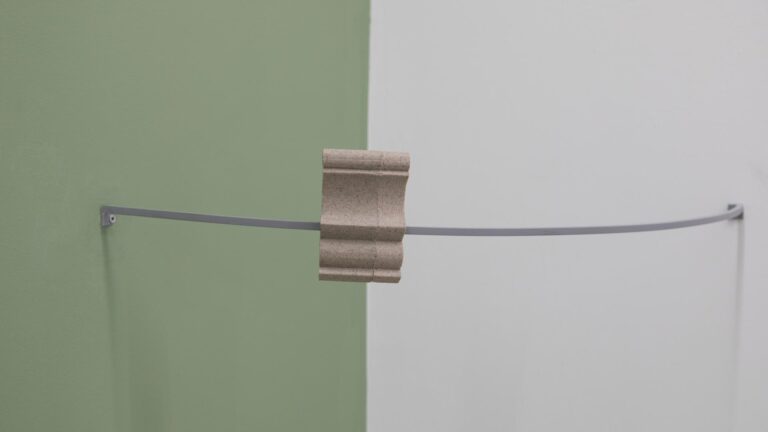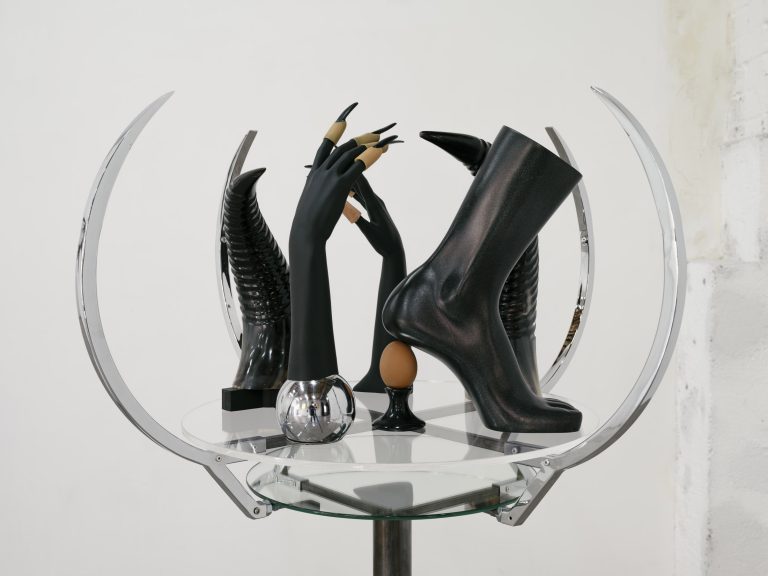Artist: Anna Irina Russell
Exhibition title: A blinding light
Venue: Bombon Projects, Barcelona, Spain
Date: June 25 – September 6, 2020
Photography: All images copyright and courtesy of the artist and Bombon Projects, Barcelona
In contrast to humans, who develop much of our existence upright, many other animals remain in the world in a horizontal position, supporting their body or all their limbs on the ground, moving with jumps, crawling or sliding for the surfaces, staying close to the ground level and in some cases also to the water, attentive to their noises, their temperature changes, their slight tremors. Many of these non-human animals have a faculty that we do not have: the ability to communicate through ultrasound, auditory stimuli that our perceptual limitations do not allow us to recognize, but that they can perceive as vibrations.
Anna Irina Russell has investigated these communication processes in some animals such as frogs, termites, spiders or green locusts, which can exchange information by emitting and receiving vibrations in the substrate (either the ground, the surface of the water, a leaf or a cobweb). Based on this research and her previous work on communication systems, interaction codes and semiotic power and control structures, the artist has developed a specific installation for Bombon Projects’ space in which light, understood as an intangible sculptural matter, it is transformed into vibration and reflection. In addition to the artificial lights, the installation also includes the sun’s rays, which are filtered into space through cracks and some exposed glass. This light, which varies every day and also changes throughout the day, is integrated into the installation as an uncontrollable component, as an autonomous creative agency that dialogues and negotiates with that of the artist herself.
All this forms a receptive and changing system, which feeds back and is never the same, and which speaks to us of processes of reciprocity, of listening, and of a strength that does not reside in immutability, but in interdependence and constant transformation. It is a proposal that seeks to destabilize the hegemony of the human sensory regime, predominantly visual, and introduce into space a repertoire of vibrations through magnetic fields and ultrasound that remind us that not everything we see has a visible nature only; that there are phenomena, such as light, which other living beings perceive as vibrations, as sounds, or as heat. As stimuli that do not necessarily or solely have to stimulate vision.
Russell, therefore, pays attention to the processes of emission and detection of vibrational signals in animal relationships, and observes how this type of communication differs from human communication, in which visual and sound information predominates, especially that linked to language. But the artist is also interested, specially, in how unintentional messages are generated in these communicative acts, which place the sender in a position of vulnerability. This is often residual or collateral information derived from the main message that the sender wants to transmit, signals that the animal sends involuntarily or without being aware of it, and that can easily turn it into prey for its predators, also able to receive and recognize these other messages. An example would be the tree frog, which in its courtly cry generates waves and vibrations on the water that bats and other predators can recognize. Even if the frog detects the presence of a threatening bat and stops emitting that sound, the vibrations on the water surface persist, like a residual and traceable message that still endangers it. Another example would be the male green locust, which to woo the female produces a squeak that vibrates the substrate. The female locust listens to this chirp, and also captures the ultrasound in the form of vibration; but the spider is also able to detect them, and can easily catch the emitting locust. In this way, something as assertive as a courtly shout, a communicative act that in itself expresses a relational will, a predisposition to open up to the world and to others, becomes in these situations a danger, a trap.
Despite the formal differences that separate this animal communication system from the human one, the artist observes in the phenomenon of the involuntary emission of traceable signals a parallelism with certain forms of surveillance and control in technological communication systems employed by people. It is pertinent to refer to how many of these technologies originate in the scientific and military field, and how, being implemented in society as a whole, they adopt forms and functionalities that make them friendlier, but never cease to operate as structures of surveillance and control. This leads to a paradoxical situation, in which as users we seem to have an immeasurable amount of information, seemingly transparent and always within our reach, but which in turn also generates the circulation of a huge amount of data on our person who is remarkably opaque and inaccessible to us. The title of Anna Irina Russell’s exhibition, in this sense, can be read as a warning, as a statement that warns us that so much information can be blinding, and that perhaps deprives us of seeing something essential, as a danger. or a trap.
But just like the vinyl surfaces that cover the gallery’s glass, this opacity also has some cracks, and A Blinding Light perhaps gives us clues on how to spot and use them. If in an indirect way Russell’s project makes us think of these opaque areas of human technological communication, governed mainly by artificial intelligence, her installation invites us, as well, to approach other non-human intelligences but that are natural, such as those of certain ecosystems and those of some animals. And this is where it becomes pertinent to think of the green locust, which, in order to evade the spider, can emit the same vibration as the wind, and thus confuse its predator. Or in the tree frog, which, in order to avoid being devoured during the courtship, learns to synchronize its cry with that of other frogs, and in this sign of unison love, it deceives the bat. Perhaps the way to shun these forms of ubiquitous control is to escape through the cracks, loving as a singular plural, and simulate being wind, or light, or water.
Alexandra Laudo [Heroínas de la Cultura]














